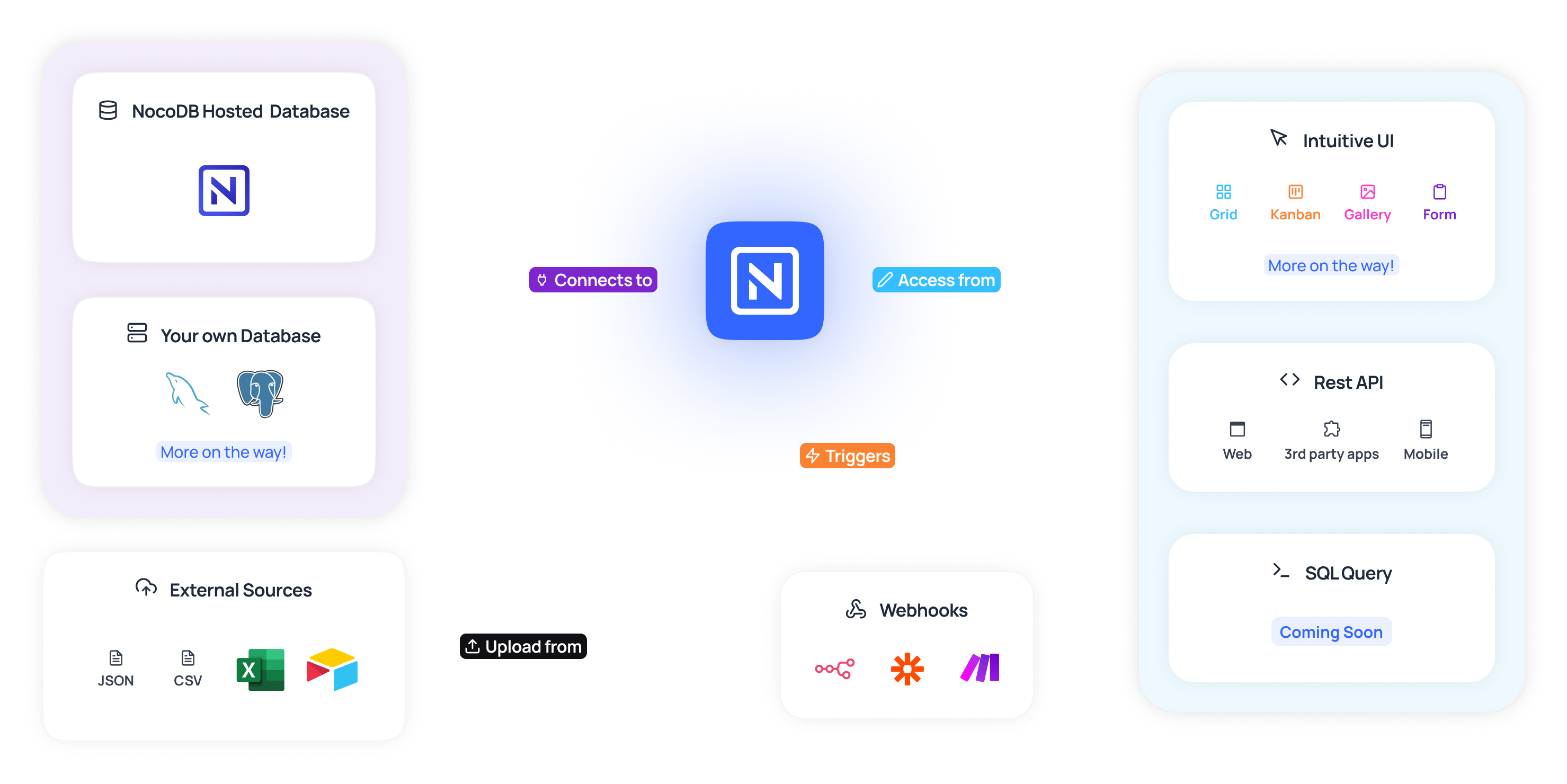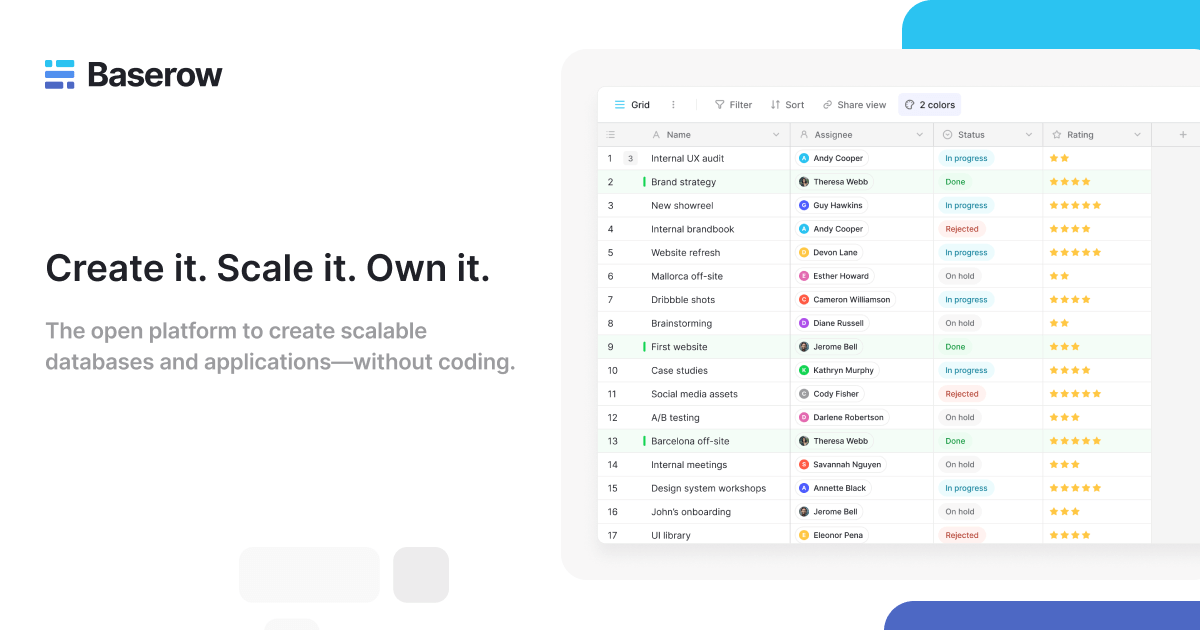No-Code Open System Data Source Development: Equipping Organizations to Construct Faster
No-Code Open System Data Source Development: Equipping Organizations to Construct Faster
Blog Article
Discovering the Benefits of Scalable Databases That Require No Coding Skills for Efficient Information Management Solutions
The introduction of scalable data sources that eliminate the requirement for coding skills offers a transformative opportunity for organizations seeking efficient data monitoring options. By allowing non-technical users to harness the power of information with instinctive user interfaces, these systems enhance access and foster collaboration throughout varied groups. Their cost-effectiveness and versatility to evolving organization needs can considerably enhance functional procedures. As we think about the implications of such innovations, it ends up being important to examine how they can improve the landscape of information monitoring and drive lasting development in a competitive setting.
Improved Ease Of Access for Users
Improved ease of access for individuals is a critical element of scalable databases, ensuring that data monitoring systems are easy to use and user-friendly. In a period where data-driven choices are paramount, accessibility allows a wider range of users, consisting of those without considerable technological expertise, to engage with data source systems properly. This democratization of information access promotes improved cooperation throughout divisions, empowering staff members to make and extract understandings notified choices.
Straightforward user interfaces, such as visual data and drag-and-drop features representation, simplify complicated data communications. These improvements decrease the discovering curve linked with conventional database administration, making it possible for customers to concentrate on leveraging information instead than coming to grips with technical intricacies. Scalable data sources often incorporate real-time analytics and customizable dashboards, supplying customers with instant insights customized to their particular demands.

Cost-Effectiveness and Resource Savings
Efficient data monitoring not just rests on ease of access but also on cost-effectiveness and resource savings. Scalable data sources designed for individuals without any coding abilities substantially reduce monetary problems generally connected with standard data source administration systems. By removing the demand for specialized shows expertise, companies can assign their sources much more successfully, focusing funds on core business activities as opposed to substantial training or employing proficient employees.
Furthermore, these databases frequently utilize cloud-based remedies, which better decrease expenses associated to equipment and upkeep. Organizations can scale their data source solutions according to their needs, staying clear of the costs sustained from over-provisioning sources. This adaptability indicates companies can adjust to transforming demands without sustaining unnecessary expenses, resulting in considerable long-term savings.
Furthermore, straightforward user interfaces improve data access and management procedures, reducing the moment invested in management jobs. This performance converts into labor expense savings, allowing teams to concentrate on critical campaigns instead of routine upkeep. Generally, taking on scalable data sources that require no coding skills cultivates a much more affordable strategy to data management, enabling organizations to optimize their sources while keeping high degrees of operational performance.
Improved Cooperation Across Teams

Additionally, scalable data sources promote seamless communication among employee. With easy to use interfaces that require no coding abilities, staff members can conveniently develop, customize, and share records or dashboards tailored to their particular demands. This democratization of information encourages non-technical individuals to add understandings, enhancing the collaborative atmosphere.
Additionally, these databases support simultaneous access, allowing several individuals to service the same dataset all at once. This attribute improves efficiency, as groups can engage in joint data evaluation without the risk of version control concerns. The ability to leave notes or comments straight within the database additionally promotes dialogue and clears up data analyses.
Streamlined Data Management Processes
In today's data-driven environment, organizations identify the requirement of structured information administration refines to make best use of efficiency and precision. By leveraging scalable data sources that require no coding abilities, services can streamline their information handling and minimize the intricacies typically related to standard data source systems. This accessibility empowers non-technical customers to engage directly with data, promoting quicker decision-making and minimizing dependence on specialized IT employees.
Structured information management procedures enhance process by automating routine tasks such as data access, validation, and reporting. Automated information integration makes sure that info from numerous sources is aggregated perfectly, eliminating silos and promoting a linked view of critical company metrics (no-code). Furthermore, user-friendly user interfaces enable employees to manipulate information view it easily, enabling them to create understandings that drive calculated initiatives without the requirement for considerable training.
This effectiveness not just accelerates operational procedures yet additionally lessens the possibility for human mistake, making certain that information remains precise and trustworthy. Eventually, structured data management processes via scalable data sources cause boosted efficiency, permitting companies to concentrate on core tasks while making sure that their information administration practices are effective and effective.
Scalability for Expanding Businesses

For expanding ventures, the ability to scale up or down is critical. A scalable database can take care of an influx of data produced from brand-new clients, products, or solutions, guaranteeing that company procedures remain undisturbed. Additionally, these data sources give the capacity to take care of peak tons successfully, which is necessary during periods of quick development or seasonal spikes.
In addition, several scalable data source options are created with user-friendly user interfaces that call for no coding abilities, equipping non-technical personnel to manage information successfully (no-code). This democratization of information administration allows organizations to designate resources tactically and decrease reliance on specialized IT personnel
Eventually, taking on a scalable data source not just boosts operational performance but also promotes an atmosphere where services can evolve and introduce without the restraints of conventional database systems. This versatility settings companies for lasting success in today's affordable landscape.
Verdict
In verdict, look at more info scalable databases that require no coding skills give considerable advantages for effective data monitoring. By simplifying data monitoring processes and offering scalability for growing organizations, such solutions make it possible for organizations to adapt to altering demands successfully.
Improved access for individuals is an essential aspect of scalable data sources, making certain that data administration systems are easy to use and instinctive.User-friendly user interfaces, such as visual information and drag-and-drop features representation, simplify intricate data interactions. On the whole, adopting scalable databases that require no coding abilities promotes a more affordable approach to data management, enabling companies to maximize their resources while maintaining high levels of operational efficiency.
By leveraging scalable databases that need no coding abilities, businesses can streamline their data handling and decrease the intricacies typically connected with standard data source systems - no-code.Streamlined information monitoring procedures improve workflow by automating routine jobs such as information access, recognition, and coverage
Report this page